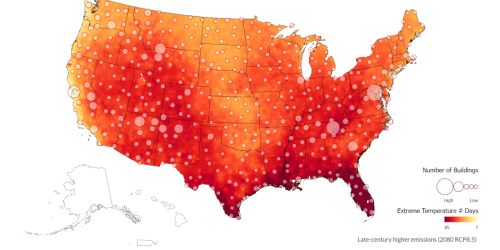For the first time, the U.S. Environmental Protection Agency (EPA) has included a comparison of NOAA’s atmospheric emission estimates of four hydrofluorocarbons (HFCs) to its own inventory-based estimates in the just-released U.S. Inventory of Greenhouse Gas Emissions and Sinks, based on results first reported in the 2017 Geophysical Research Letters study by a team of NOAA, CIRES, and EPA scientists.
Commonly used in air conditioning and refrigeration, HFCs were developed as substitutes for ozone-destroying chemicals. As the phase-out of ozone-destroying refrigerants proceeds, HFC emissions and atmospheric concentrations have increased dramatically in recent years.
Due to their growing contribution to global warming, the future production and consumption of HFCs are scheduled for reduction internationally by the Montreal Protocol’s Kigali Amendment. In the U.S., the American Innovation and Manufacturing Act of 2020 calls for an 85% reduction in HFC production and consumption by 2036.
Accurate estimates of human-caused greenhouse gas emissions are important for understanding contributions to climate change, and for evaluating the effectiveness of emissions reduction activities.
Throughout the world, greenhouse gas emissions are calculated by compiling an inventory of emission activities and quantifying the associated emissions from these activities using approaches such as modeling and application of emission factors from measurement studies. This approach is also called the “bottom-up” inventories.
NOAA Global Monitoring Laboratory takes the “atmosphere-based” or “top-down” approach, which estimates emissions by careful measurements of atmospheric samples collected downwind of a source region.
While “top-down” and “bottom-up” each have limitations, the two independent methods complement each other and help provide more accurate greenhouse gas information. As man-made chemicals with no natural sources, HFCs are one of the most suitable greenhouse gases for comparisons between the bottom-up inventory and atmosphere-based estimates.
NOAA Global Monitoring Laboratory plans to continue to provide national- and global-scale observations of the atmosphere and build tools that guide informed decisions for a Climate Ready Nation.
The research was supported in part by NOAA Climate Program Office’s Atmospheric Chemistry, Carbon Cycle, & Climate program.










